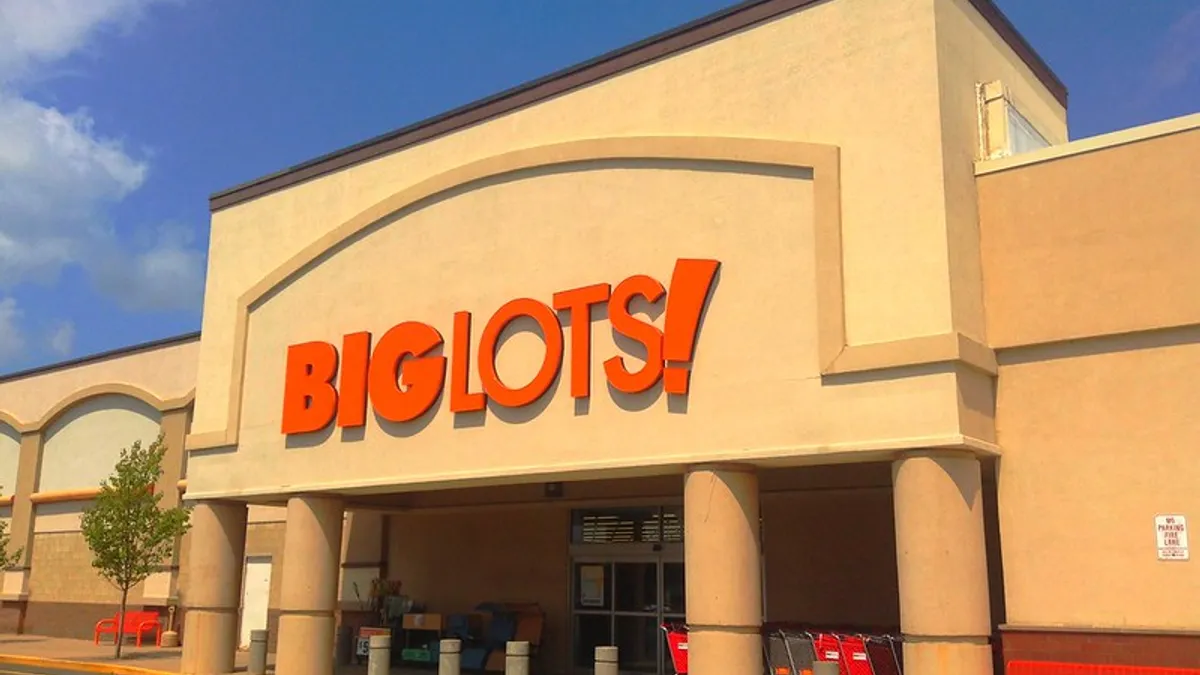Dive Brief:
- Big Lots slashed over a thousand SKUs as the retailer looks for new procurement opportunities and focuses on lowering customer price points.
- The retailer cut around 1,700 SKUs within the “essentials” category, which includes packaged goods, food and medicine, President and CEO Bruce Thorn said on an earnings call last Thursday. Big Lots is also removing more than 240 cosmetic SKUs.
- Removing “unproductive and duplicate” SKUs opens the door to buy more quality closeout items from retailers and offer more compelling bargains to customers, Thorn said. Big Lots procured 160% more bargains at retail compared to the previous quarter.
Dive Insight:
Big Lots is focusing on rightsizing inventory levels and working with suppliers to lower prices for customers and remain competitive in a heavily promotional retail landscape.
Part of the retailer’s path to lowering price points for customers includes cutting costs by eliminating certain SKUs. Big Lots, for example, will now only carry one line of Neosporin instead of six.
“We're not a drugstore. We don't need that,” said Thorn. “By freeing up this redundancy and unproductive SKU base in those essentials, we're able to offer more solutions in the essentials .... [and] buy our differentiating assortment changes.”
The retailer plans to “continue to curate our assortment” throughout the rest of 2022 and into 2023.
Beyond SKU cuts, Big Lots has also worked with vendors to lower opening price points for customers across its assortment. Prices for furniture are now at pre-pandemic levels for more than 60% of SKUs, and nearly all furniture items are expected to see price revisions come Q1 of 2023.
The retailer will continue to focus on providing more bargains for customers particularly as an inflationary environment pinches consumer wallets. By the end of 2023, Big Lots’ assortment will be two-third “bargains and treasures,” up from the current 40% range.
“Where we win is going to be in the home categories having those opening price points right, having the bargain penetration [the consumer] expects from us and in a leaner more solution-oriented essentials assortment,” said Thorne.
This story was first published in our Procurement Weekly newsletter. Sign up here.














